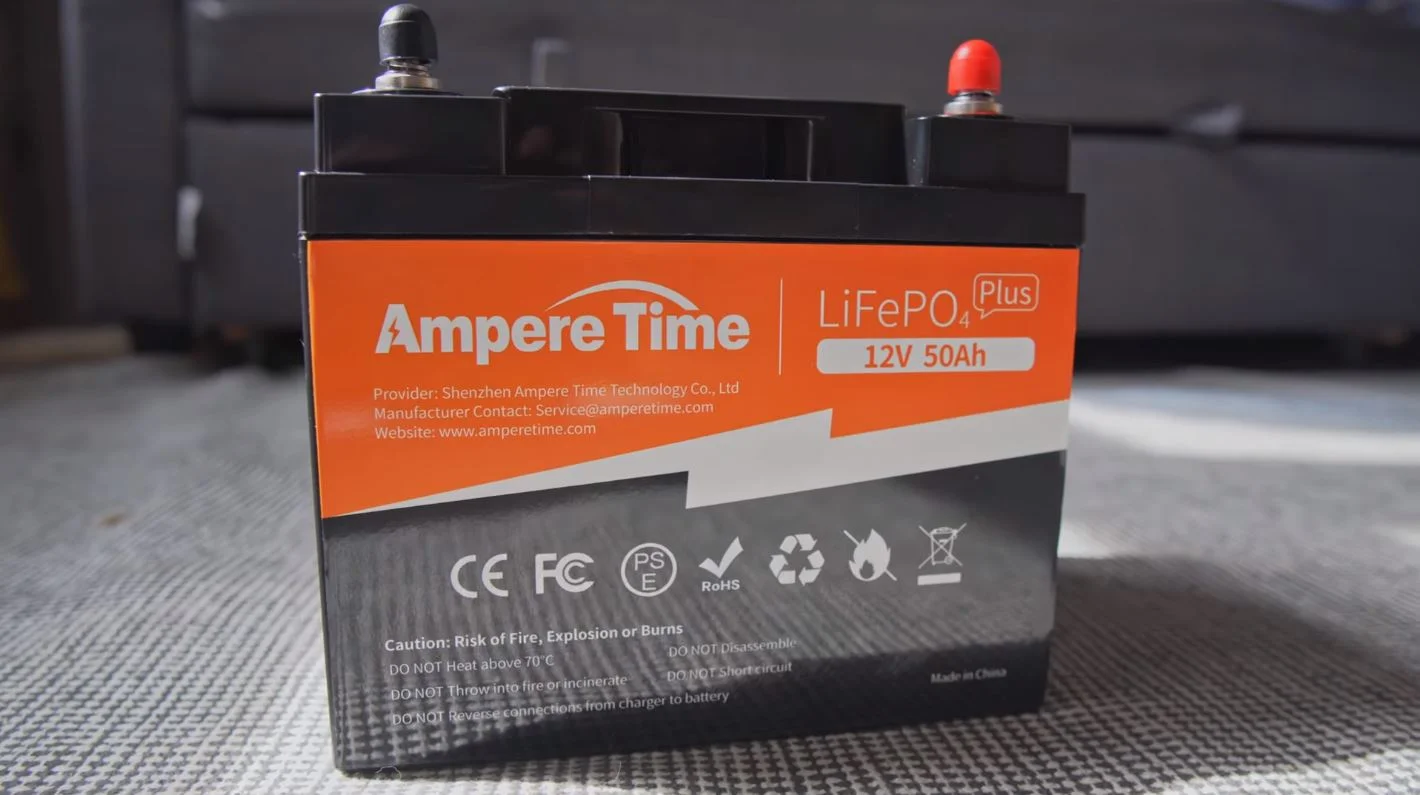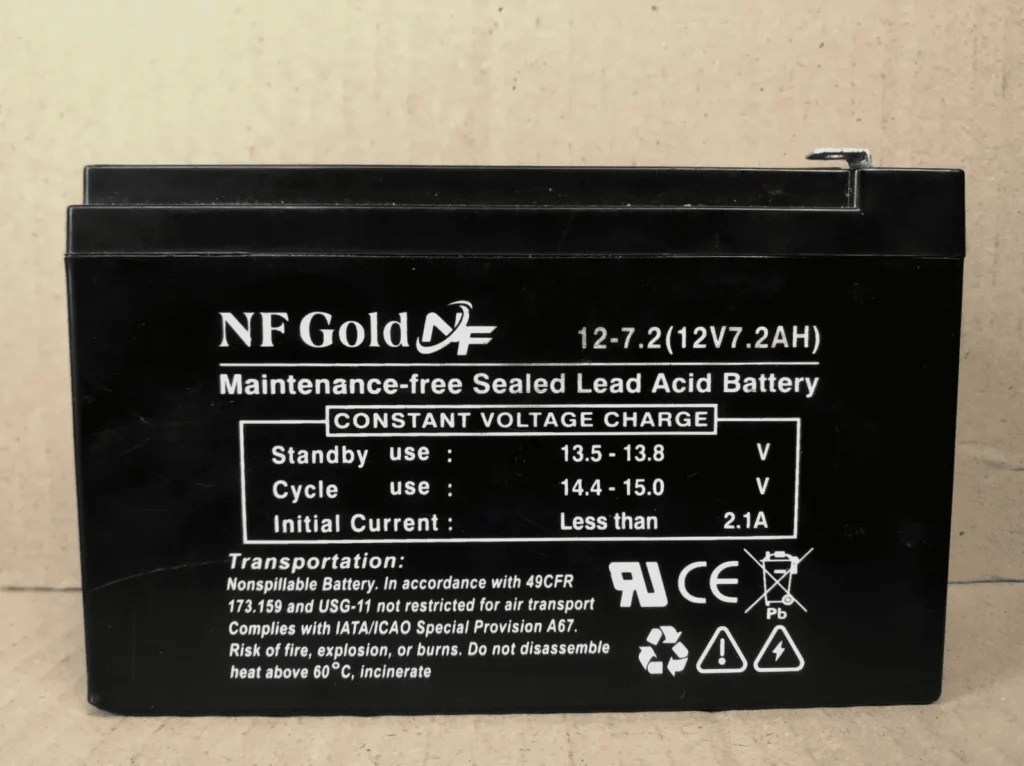Understanding how long a 60Ah battery will last is crucial for ensuring that you have enough power to meet your needs.
In this post, we'll explore the various factors that can impact the runtime of a 60Ah battery and provide you with some practical tips to help you get the most out of your battery.
Need an easy solution? Use our free Battery runtime calculator to find out 60ah battery runtime on load.
Introduction To Batteries

If you are new to using batteries, it is important to understand the basics that will determine the backup time of your battery.
1. battery capacity (ah, volts, Wh)
Here is a simple explanation of the different electricity units commonly used in batteries:
- Amperage (A): a unit that describes the amount of current
- Amp-hours (Ah): the total amount of current that a battery can store
- Voltage (V): the amount of electrical potential or pressure that can move the current in and out at a given time
- Watts (W): the total amount of power (Amps × Volts = Watts)
In simpler terms, Amp-hours can be thought of as the total length of a pipe, and Voltage as the width of the pipe.
Battery capacity is measured in amp-hours (Ah), with the standard voltage being 12v, 24v, and 48v. A 24v battery can store more power than a 12v battery with the same capacity.
For instance, a 12v 60ah battery has a capacity of 720 watt-hours (Wh), a 24v 60ah battery has a capacity of 1,440Wh or 1.44kWh, and a 48v 60ah battery has a capacity of 2,880Wh or 2.88kWh.
For further information, you may refer to our post on Amps to Watts Calculator: How Many Watts in a 12-Volt Battery?
2. Battery Types

Batteries are composed of different chemical formulas that determine their depth of discharge limit and discharge rate. The most common types of batteries are Lead-acid, Lithium-ion (LiFePO4), AGM, and gel batteries.
Depth of discharge (DoD) refers to how much battery capacity is used between charges. For example, 50% DoD means that half of the battery capacity has been used, and 80% DoD means that 80% of the battery capacity has been used.
The following table shows different battery types with their recommended depth of discharge limits:
| Battery type | Usable capacity after DoD limit |
|---|---|
| 60ah Lead Acid | 30ah |
| 60ah AGM | 36ah |
| 60ah Gel | 30ah |
| 60ah Lithium-ion (LiFePO4) | 60ah |
Only Lithium-ion (LiFePO4) batteries can be fully discharged up to 100%. On the other hand, most other battery types have a DoD limit of 40-50%, meaning you can only use 50-60% of their storage capacity.
Discharging your battery to 100% depth of discharge will damage the battery's internal cells. Which as a result will decrease the battery lifespan and discharge efficiency. In some cases, you won't be able to recharge your battery.
3. C-Ratings
The battery's C-rating measures the current in which it is charged or discharged. Car batteries typically have higher C-ratings due to their design, while deep cycle batteries are designed for lower yet continuous discharge rates.
Discharging a deep cycle battery at a higher rate than recommended will increase internal temperature, causing wattage loss and decreased backup time.
Lead-acid, AGM, and GEL batteries usually have C-ratings of 0.2C, while lithium or LiFePO4 batteries can be discharged at 1C (1C=1 hour).
Discharge time affects the usable capacity of a 60Ah lead acid battery. The table below shows an example:
| Usable 60ah lead acid battery capacity | Hours of discharge |
|---|---|
| 60ah | 20 hours |
| 54ah | 10 hours |
| 52.5ah | 8 hours |
| 50.5ah | 6 hours |
| 48ah | 5 hours |
| 42ah | 3 hours |
| 36ah | 2 hours |
| 30ah | 1 hour |
Note: This table doesn’t take into account lead acid’s 50% DoD limit.
Note! Check the exact C-ratings of your battery read the battery specs sheet or it will be mentioned on the battery it self or you can ask the manufecturer about the battery c-ratings of yours
Different batteries also have different discharge efficiencies, meaning how much of the drained power will run the appliance and how much will be wasted.
Based on directscience.com data:
- Lead-acid batteries discharge efficiency ≈ 80 − 85%
- Lithium-ion batteries discharge efficiency ≈ 90 − 95%
Related post: Battery Charge And Discharge Rate Calculator: C-Rating To Amps
Inverter Efficiency (DC vs AC watts)
Batteries store power in DC (direct current), but most household appliances require AC (alternating current). To convert DC into AC, inverters are used, but they are not 100% efficient, resulting in power loss during the conversion process.
Most inverters have an efficiency rate of about 90%, which means that 100 DC watts are required from the battery to run a 90 AC watt appliance.
Note that the exact efficiency rate of your inverter can be found in the product description or assumed to be 90%, which is the most common efficiency rate.
Choosing the right size cable for your battery and inverter is also crucial to minimize power losses. Check out our cable size chart in the related post below to determine the appropriate cable size for your inverter.
Related Post: Solar DC Watts To AC Watts Calculator
60ah Battery Backup Time: Calculation
Using the factors explained earlier, we can calculate how long a battery will last on a load.
For example, let's consider a fully charged 12V 60Ah lead-acid battery with a 50% DoD limit. If we run a 50-watt AC load on this battery, how long will it last?
Formula: Battery runtime = (Battery Ah × Battery volts × discharge efficiency × DoD limit × inverter efficiency) ÷ load
Now let's put the values into our formula.
60ah battery runtime = (50 × 12 × 0.85 × 50% × 90%) ÷ 50
60ah battery runtime = 229.5 ÷ 50
How long will 60ah battery run a 50 watt load? --- 4.5 hours
Your 12v 60ah battery with 50% depth of discharge will last about 4 and a half hours while running 50 watts of load.
How Long Will a 60ah Battery Last? - Chart
Here is a chart showing the estimated runtime of a 12V 60Ah lead-acid and lithium-ion battery when running various appliances:
| Appliance | Rated Wattage | Est. Runtime on 12v 60ah lead-acid battery | Est. Runtime on 12v 60ah Lithium battery |
|---|---|---|---|
| Fridge | 130 watts | 6 hours | 13 hours |
| TV | 50 watts | 5 hours | 12 hrs |
| LED Bulb | 20 watts | 14 hours | 31 hours |
| Computer | 300 watts | 40 minutes | 2 hours |
| Air purifier | 25 watts | 11 hours | 25 hours |
| Ceiling Fan | 60 watts | 4.5 hours | 10 hours |
| Electric Blanket | 200 watts | 1 hour | 3 hours |
Summary
- 12v 60ah lead-acid battery with a 50% Depth of discharge limit last about 6 hours while running a medium size new technology fridge and lithium (LiFePO4) battery will last about 13 hours with a 100% Depth of discharge limit.
- 12v 60ah lead-acid battery with a 50% Depth of discharge limit last about 5 hours while running a TV and lithium (LiFePO4) battery will last about 12 hours with a 100% Depth of discharge limit.
To keep your battery fully charged you'd need the right size solar panel, to calculate what size solar panel you'd need to charge your 60ah battery use my free online calculator.
Must Read: Solar Panel Calculator For Battery
Conclusion
Short answer --- Use the calculator mentioned above to calculate the backup time of your battery.
Long answer --- Use this formula to calculate the runtime of your battery
Battery runtime = (Battery Ah × Battery volts × discharge efficiency × DoD limit × inverter efficiency) ÷ load
Battery Capacity in Watt-hours = Battery Ah × battery Volts (V)
I hope this short guide was helpful to you. still, have any confusion? LEAVE A COMMENT or contact us. Thank You!


